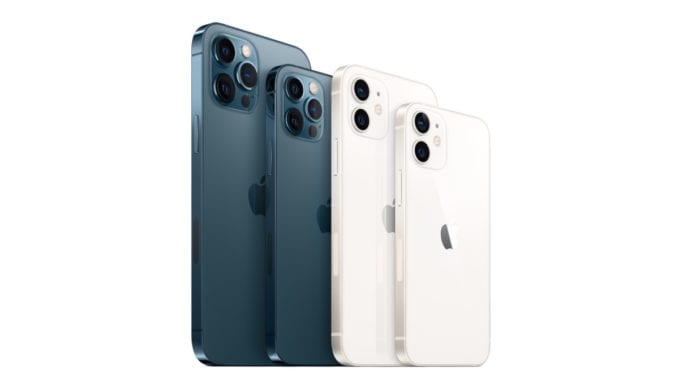Will the new, 5G-capable iPhone be a tipping point for adoption of 5G? Carriers seem to be betting on it, particularly Verizon, which used the occasion of the launch of the 5G-capable iPhone 12 models as an opportunity to launch its own its low-band 5G service and expanded capabilities in cities where it has its millimeter-wave-based Ultra Wideband service.
AT&T had the original exclusive on iPhone, and Verizon, it seems, is determined to establish itself as “the” carrier on which to get a 5G iPhone. CEO Hans Vestberg was on-hand at the launch event to discuss the carrier’s 5G capabilities, and Ronan Dunne, CEO of Verizon’s Consumer Group, said in a statement that the company’s network leadership plus the new iPhone “delivers a monumental moment for our customers, for our industry and for the future of technology innovation. 5G just got real.”
You could say, though, that Apple is taking the “layer cake” strategy that T-Mobile US has touted when it comes to 5G spectrum support in the iPhone 12 models, which includes low band and mmWave spectrum support, and also support for T-Mobile US’ rich midband spectrum holdings at 2.5 GHz, among others. Apple says the device supports the most 5G bands of any smartphone.
Verizon said its newly announced Dynamic Spectrum Sharing-fueled low-band network covers 200 million people across the country. The carrier is aggregating up to eight channels of mmWave in cities and achieving multi-gigabit speeds in some areas, promising that “customers will see double the download speeds they have historically experienced on 5G Ultra Wideband, with peak speeds up to 4 Gbps possible in some locations.” Two-carrier aggregation is happening on the uplink as well, Verizon said.
In addition to the broader coverage and faster peak speeds, Verizon also added 19 additional stadiums and large venues, and highlighted seven airports served by its mmWave network.
“Verizon’s participation in the event was an important move for Apple,” said Biju Nair, president and CEO of HYLA Mobile, which focuses the secondary device market. That market is likely to see a surge of devices coming in, as customers upgrade to the new iPhone.
“Apple has positioned the proliferation of 5G networks as one of the important reasons for consumers to upgrade to its latest set of devices,” he went on. “Apple’s carrier partnerships have always been integral to its success, but the renewed focus on carrier partnerships at today’s launch is crucial for encouraging upgrades.
“Trade-ins will be a significant contributor to the super cycle that our carrier partners, and that industry analysts, are expecting as a result of today’s launch,” Nair said. He also noted that Apple is “allowing customers to buy directly from Apple, and process trade-ins via its carrier partners, so consumers can get the benefit of the best possible trade-in offers—something it has never done before, and something that will contribute massively to upgrades and the super cycle.”
Nair added that Apple is supporting multiple 5G bands in all of the newly announced devices — which, he said, “means when it comes selling these devices into the secondary market, they will be compatible. The fact that Apple tested the devices on 100 carriers also makes selling devices into the secondary market a lot easier.”

